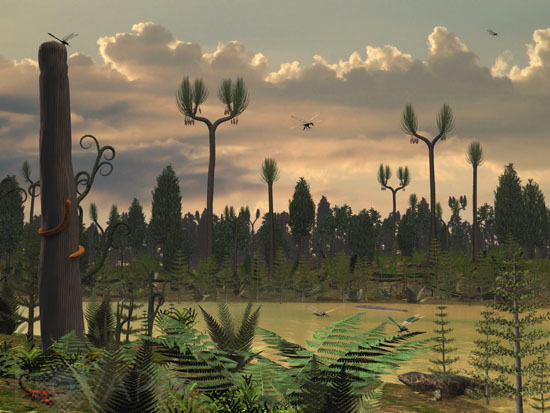Photo Agency - Astronomy - Space - Nature

Carboniferous riverbank
auteur: Walter B. Myers/Novapix
référence: t-glb91-04000
Image Size 300 DPI: 33 * 25 cm
Ferns, seed ferns, and giant lycopods (primitive moss-like plants with long slender leaves) flourished during the Carboniferous period, from about 360 to 300 million years ago. Some lycopods, such as the arboreal Sigillaria illustrated here, grew as high as 130 feet. (100 feet is considered tall for a modern Maple tree). Other tree-like plants included many varieties of the Calamites, extinct ancestors of modern horsetails.
While the first dinosaurs were not to appear for another 130 million years, the Carboniferous forests were home to a plethora of terrestrial animals, including many species of invertebrates and some of the first walking vertebrates, including amphibians resembling modern salamanders. It was the insects however, many of them giants, that dominated the landscape. There were dragonfly-like Meganeura with wingspans up to 30 inches, giant centipedes roamed the forest floor, and some scorpions were over 20 inches long.
Contact : Stéphane Aubin +33-(0)9-51-26-53-76
© Novapix - All rights reserved




